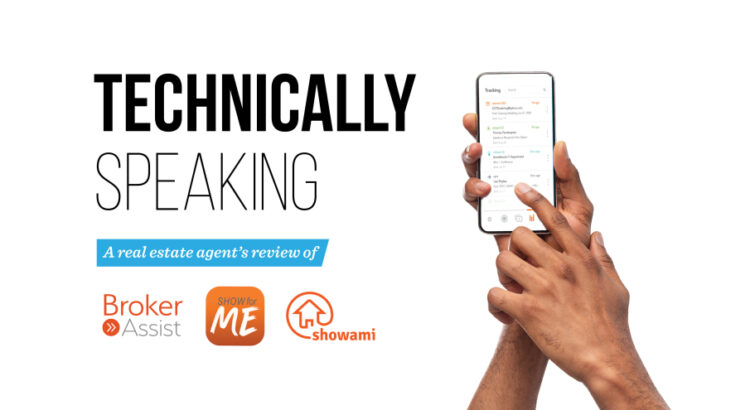If you’re a busy broker and don’t have access to an in-house network of brokers that can assist when you get buried in appointments, then look to these apps, where you can outsource the work to other licensed brokers to keep you afloat. It’s like Uber for real estate help: you post your need, whether it be a one-off showing, a buyer tour or sitting an open house, and voila! You will have licensed brokers who will respond and fulfill your need, just like that Uber driver who is nearby to pick you up and drive you to where you need to go.
On the flip side, these apps are great for new brokers who want to learn the business and earn money while doing it. It’s gig work for brokers. And it’s not just for newbies; veteran brokers can also make some extra cash in their spare time.
Manage your time more effectively
These apps are one-stop shopping for finding assistance without reaching out individually to multiple brokers with countless calls, texts and emails to get coverage when you are overbooked. Real-time follow-up of task completion, immediate feedback to and from the broker you have hired, and compensation are all done within the app.
The apps vary on what they offer, what they cost and how they work. The three that caught my attention were SHOWforME, BrokerAssist and Showami. Sign-up for all is free and ensures that the participating brokers are licensed and able to perform real estate-licensed activities.
It’s best to identify your needs. If you only need showing coverage, then Showami will work, as that is all they do. If you also need open house coverage, then SHOWforME and BrokerAssist are your options. If your needs exceed that, then BrokerAssist is the way to go.
Determine which price structure works best for you
The nice thing about these apps is that you can avoid awkward conversations about payment. The hiring price is posted loud and clear and in most cases is set by the hiring agent and can be negotiated.
With SHOWforME, a flat-fee price varies depending on your location. This starts at $30, but in my Chicago market, it costs $50 for the first showing and $15 for each additional property, and it is paid upfront. SHOWforME takes a 20% cut, pays the agent and charges you in full once the task is completed.
Showami’s base price starts at $39 and varies by region. For my Chicago market, it is $44. But you can increase that amount as you wish, with a cap at $199. They also allow for tips after the job has been completed. However, they take the biggest percentage — on a $39 showing, the assisting agent only gets $24, roughly 40% going to the app! With Showami, the assisting agents may counter your posted offer and ask for more.
BrokerAssist allows you the freedom to set your own price. You pay the assisting agent directly once the task is complete, and the app does not take a cut! I like that. If no one is accepting your offer, you can increase it until you find a taker.
The process can vary from app to app
Each app has its own way of doing things. For instance, Showami allows you to choose your preferred agent when you submit a request. That agent has a 10-minute lead time to accept before it goes out to others. If an agent is not found within 30 minutes, Showami will notify you and you can decide if you want to up your price. They will continue that process until 30 minutes prior to the showing request unless you stop it. If it goes unaccepted, you are not charged. The nice thing about Showami is that you have the option to schedule the actual showings on your own OR the showing agent can schedule the showing appointments for you (another time-saver) and then will inform you once confirmed. From there, you let your clients know what the schedule is and whom they will be meeting. One hour after the showings are complete, hiring agents have the opportunity to leave a tip.
Broker Assist has very detailed profile pages with star ratings. Once you post a job, it gets plotted on a map with the offering price. Assisting agents can open the post, review the details and determine if they would like to accept. If they do, the requesting agent will receive a notice that they have an interested broker to take on the task. If multiple brokers are vying for the same post, you can review their profiles and determine which is the best fit. Hiring agents can stay on top of posts that are still “open,” “pending,” “confirmed,” or “closed.” Assisting agents can track which ones they have applied for that are pending or confirmed. Once the agents have been selected, you can call or message the assisting agent with more private info (lockbox codes, names, etc.) and use their calendar integration to add it to your calendar. After the task is done, notes can be left on how it went.
The SHOWforME app requires you to identify your brokerage when you register. If your firm is not listed, you have to go under “other,” and any agent from any firm can pick it up. Otherwise, it will be limited to just agents within your firm. You have the option to schedule the showings on your own or have the assisting agent do it for you. Once these are scheduled, you inform your clients who they will be meeting and what kind of car they have. You can watch in real time on a map where the assisting agent is on their route to the showings, just like Uber.
These apps are real winners to keep your life and schedule in balance, plus retain your client and your commission while another broker shows homes for you. Assisting brokers love making the extra moolah, but most of all, it’s a win-win for your clients! They get to see the properties they want to see when they want to. No one can be everywhere at all times, but now your clients can be accommodated at their convenience, and the ability to get them in, especially in low-inventory markets, is going to keep them happy.
Anne Ewasko is a veteran Realtor in the Chicago area and a longtime techie. Visit her at anne.luxhomechicago.com.


